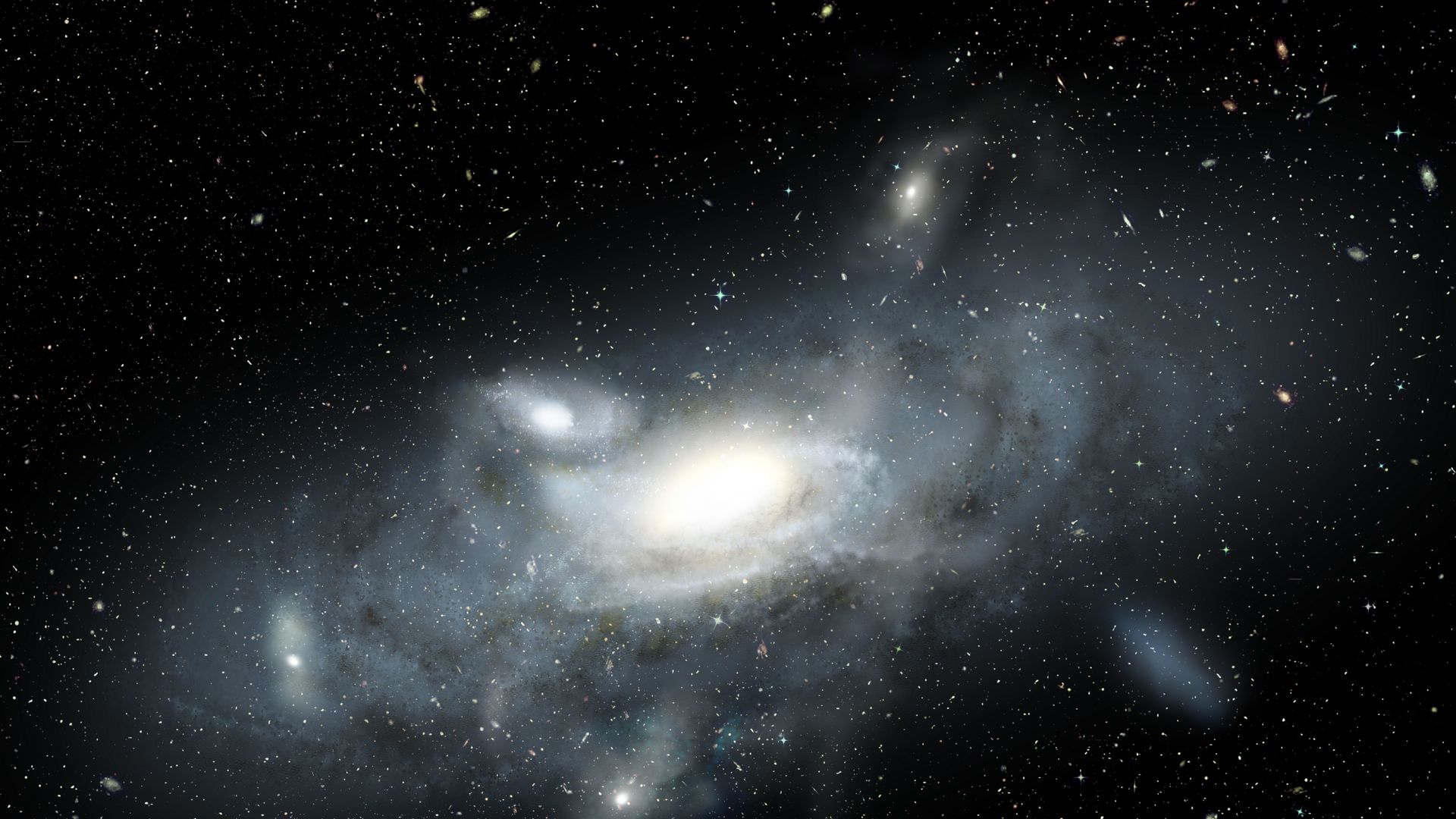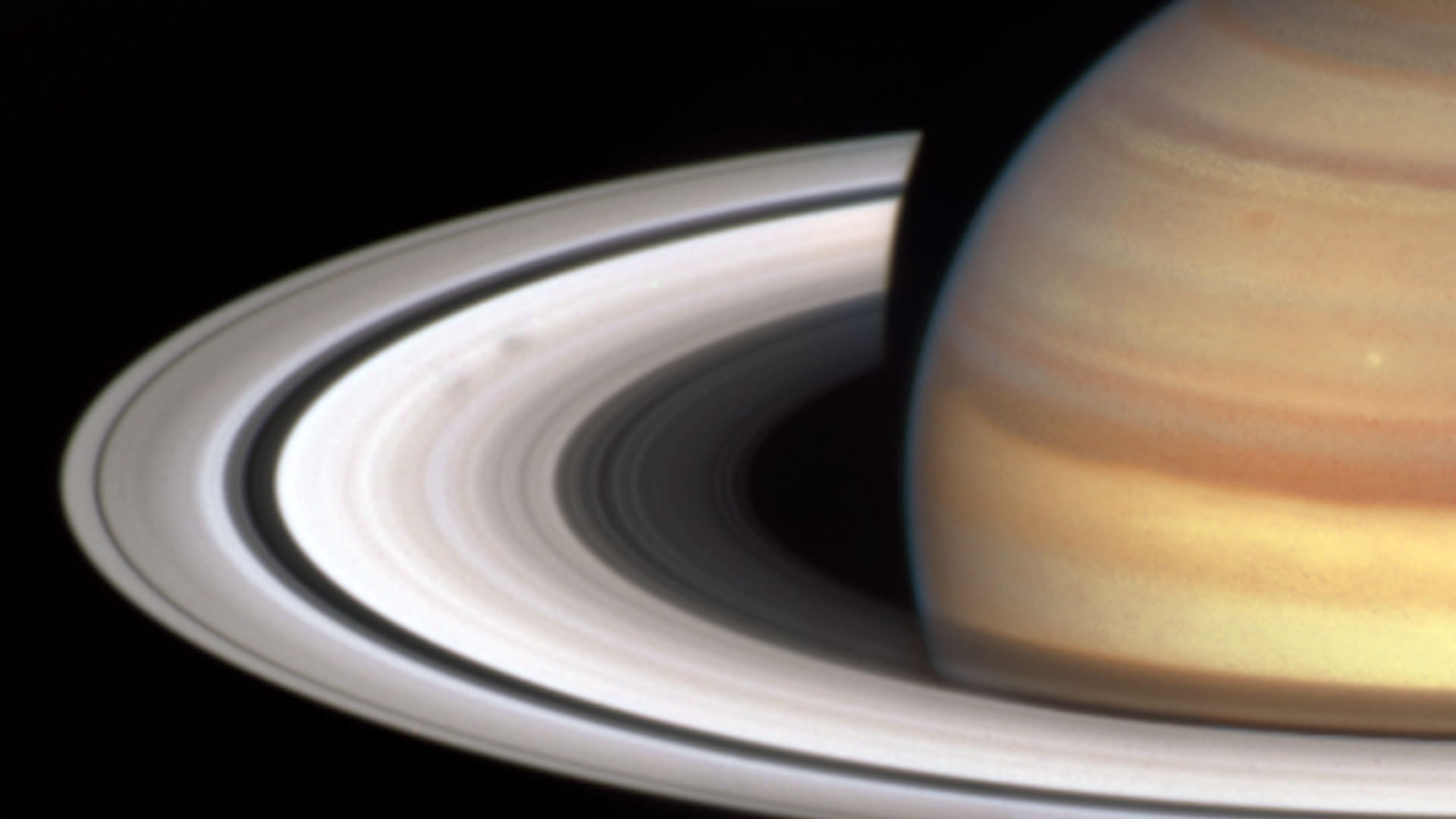| | | | | | | Presented By Brilliant | | | | Axios Space | | By Miriam Kramer · Feb 14, 2023 | | Thanks for reading Axios Space. At 1,422 words, this newsletter is a 5.5-minute read. - Axios' second annual What's Next Summit is set for March 29 in Washington, D.C. (I think y'all will be particularly excited to see NASA administrator Bill Nelson on the list of speakers.) Check out the rest of our speaker lineup and register to livestream the event here.
Please send your tips, questions and spy satellite valentines to miriam.kramer@axios.com, or if you received this as an email, just hit reply. | | | | | | 1 big thing: Eyes in the skies |  | | | Illustration: Natalie Peeples/Axios | | | | Balloons have some advantages over satellites when it comes to surveillance, but also carry different risks — as Beijing recently learned when the U.S. shot down a spy balloon launched from China that flew into U.S. airspace earlier this month, I write with my Axios China colleague Bethany Allen-Ebrahimian. Why it matters: The U.S. and China are now embroiled in a deepening dispute over high-altitude balloons that is threatening to further derail the bilateral relationship. Driving the news: China's Foreign Ministry on Monday accused the U.S. of sending high-altitude balloons "illegally" into Chinese airspace more than 10 times since last year. - U.S. officials deny this. "Any claim that the U.S. government operates surveillance balloons over the PRC (People's Republic of China) is false," National Security Council spokeswoman Adrienne Watson said.
Between the lines: The paths of high-altitude balloons are largely governed by winds. As they climb through the troposphere — where most weather occurs — they're buffeted by west-to-east prevailing winds. - Those winds make it relatively easy for China to launch balloons that would fly above the U.S., but much harder for the U.S. to fly balloons over China.
- "Where are you launching them from? That gets left out of this a lot," James Lewis of the Center for Strategic and International Studies tells Axios.
- "Taiwan? Winds don't blow that way. Korea? Winds don't blow that way. Japan? You could do it if you didn't mind a bunch of them going off-course. You could do it, but I think the Chinese are either confused or making this up."
How it works: U.S. spy satellites were developed after high-altitude balloons and aircraft began to be targeted in enemy airspace. - Satellites can provide exquisite imagery and collect signals — from communications systems and other technology — but they are relatively easy to track, even by amateurs on the ground.
- High-altitude balloons, however, can gather high-resolution images and signals, and fly in a part of airspace that makes them relatively difficult to track. Balloons are also able to stay over one area for a longer time than a satellite.
Yes, but: The norms that govern spying in space and airspace, where high-altitude balloons fly, are different. - The difference between orbit and airspace was established after the Soviet Union launched Sputnik in 1957.
- Sputnik "goes up and goes around and nobody objects — including the United States — to that overflight," the Secure World Foundation's Brian Weeden tells Axios. "That establishes precedent that satellites can go round and round and they have this freedom of overflight — that space is legally different than airspace."
- That means shooting down unknown foreign objects in a nation's airspace is tolerated today, whereas blowing up a spy satellite would likely be considered a huge escalation.
The U.S. and China have different strategies for their spy satellite networks. - The U.S. has historically used a relatively small number of expensive, technically advanced satellites that take incredibly detailed images of Earth.
- China, meanwhile, has a more distributed network of spy satellites that aren't quite so exquisite in their imagery but it's a "good enough approach," Weeden says.
- The U.S. is interested in moving toward a more distributed spy satellite network, making it more resilient to attack and making the military less reliant on a small number of expensive satellites that could be appealing targets for jamming, dazzling and other interference.
The intrigue: The high-altitude balloon dispute may also call into question China's spy satellite capabilities, Lewis says. - If the balloon shot down on Feb. 4 was collecting signals intelligence, it may mean China's spy satellites are limited in what information they can gather, he says.
What to watch: A big question looms over 21st-century space-based defense about defining where airspace ends and space begins. - Currently, there isn't a legal, accepted definition of where space begins and airspace ends internationally.
- Some nations "want to be able to exploit this gray zone between air and space," Weeden said, adding that's because these countries are conducting activities in that gray zone they don't want them to fall into either airspace or space.
Subscribe to Bethany's weekly Axios China newsletter. |     | | | | | | 2. Inspiration4 commander gets ready to fly again |  | | | Photo Illustration: Annelise Capossela. Photos: Patrick T. Fallon/AFP via Getty Images | | | | Jared Isaacman — the billionaire who helmed the first fully private mission to orbit in 2021 — is getting ready to head back to space this year. The big picture: The commercial human spaceflight industry is growing, with private citizens flying to the edge of space or into orbit multiple times per year. Catch up quick: The new mission — called Polaris Dawn — is expected to include the first private spacewalk and will be the highest orbit yet reached by a Crew Dragon. - Isaacman will be accompanied to space by retired Air Force lieutenant colonel Scott Poteet, and SpaceX engineers Anna Menon and Sarah Gillis.
The intrigue: The training for this mission is different than the training Isaacman did for his Inspiration4 mission with three other non-professional astronauts. - "There are a lot of differences ... like eight times more science and research experiments than Inspiration4," Isaacman said. "It's more intense but just an amazing crew."
- Isaacman says he's already spending about half of his time training for the upcoming flight.
- The crew is expected to meet a number of scientific goals in the spacecraft's high radiation environment within the first 12 hours of their up to 5-day spaceflight, requiring very specific training.
What to watch: If all goes according to plan, Polaris Dawn will just be the first in a series of Polaris missions from SpaceX. - Not much is known about the second mission, but NASA and SpaceX are partnering to study whether it would be possible to use a Dragon spacecraft to boost the Hubble Space Telescope's orbit, extending its life.
- The third Polaris flight is expected to be the first crewed flight of SpaceX's Starship vehicle.
|     | | | | | | 3. An early universe Milky Way |  | | | Artist's illustration of The Sparkler. Image: James Josephides, Swinburne University | | | | Scientists using the James Webb Space Telescope have found a galaxy that may look like a young version of our Milky Way. Why it matters: By studying this galaxy and its potential growth, researchers may be able to learn more about our own galaxy and its early evolution. What they found: The galaxy, called The Sparkler, appears to be surrounded by satellite galaxies and globular clusters, according to the study published in Monthly Notices of the Royal Astronomical Society. - As the galaxy grows, it swallows those objects surrounding it, giving it the potential to grow into a galaxy like our own, the study suggests. The Milky Way is home to about 200 globular clusters.
- "We appear to be witnessing, first hand, the assembly of this galaxy as it builds up its mass — in the form of a dwarf galaxy and several globular clusters," Duncan Forbes, one of the authors of the study, said in a statement.
- "We are excited by this unique opportunity to study both the formation of globular clusters, and an infant Milky Way, at a time when the Universe was only 1/3 of its present age."
How it works: The Sparkler was seen by JWST as it looked through space and back 9 billion years, thanks to a lucky alignment of a dense cluster of galaxies that bent and magnified the light emitted by the more distant galaxy, allowing it to be seen. |     | | | | | | A message from Brilliant | | Sharpen your math, CS and data skills in a few minutes a day | | |  | | | | For professionals and lifelong learners alike, Brilliant is one of the best ways to learn. The deets: Bite-sized interactive lessons make it easy to level up in everything from math and data science to AI and beyond. Join 10+ million people building skills every day. Start with a free 30-day trial. | | | | | | 4. Out of this world reading list |  | | | An orbital sunrise from the International Space Station above New Zealand. Photo: NASA | | | | ☀️ Mercury probe and Sun spacecraft provide new info about Venus (Briley Lewis, Space.com) 🧑🏾🚀 How NASA's breakthrough "class of '78" changed the face of space travel (Alexandra Witze, Nature) 🚀 A second Russian spacecraft has sprung a leak at the ISS (George Dvorsky, Gizmodo) 🪐 There's a ring around this dwarf planet. It shouldn't be there (Kenneth Chang, New York Times) |     | | | | | | 5. Weekly dose of awe: Saturn's spokes |  | | | Photo: NASA/ESA/Amy Simon (NASA-GSFC)/Alyssa Pagan (STScI) | | | | It's a new season on Saturn. - The ringed planet's tilted axis creates seasons for the world in much the same way seasons are created on Earth.
- One feature of this new season on Saturn are "spokes" on the planet's rings — seen as two dark smudges on the rings in this new photo from the Hubble Space Telescope — that researchers have yet to explain.
One possibility: "The suspected culprit for the spokes is the planet's variable magnetic field. Planetary magnetic fields interact with the solar wind, creating an electrically charged environment," NASA wrote in a press release. - "Scientists think the smallest, dust-sized icy ring particles can become charged as well, which temporarily levitates those particles above the rest of the larger icy particles and boulders in the rings."
What's next: Scientists are planning to use the Hubble this Saturnian season to try to investigate those spokes further. |     | | | | | | A message from Brilliant | | AI won't take your job, but someone using AI will | | |  | | | | Future-proof your skill set with Brilliant and learn the concepts behind tech like AI, neural networks and more. Here's how: Brilliant's bite-sized interactive lessons let busy people grow their skills in minutes a day. Join 10M+ people learning on Brilliant — try it for free, then get 20% off. | | | | 👀 Big thanks to Alison Snyder for editing, Bethany for writing, to Bill Kole for copy editing, and to Natalie Peeples for the illustration. If this newsletter was forwarded to you, subscribe. |  | | Are you a fan of this email format? Your essential communications — to staff, clients and other stakeholders — can have the same style. Axios HQ, a powerful platform, will help you do it. | | | | | | Axios thanks our partners for supporting our newsletters.
Sponsorship has no influence on editorial content. Axios, 3100 Clarendon Blvd, Arlington VA 22201 | | | You received this email because you signed up for newsletters from Axios.
To stop receiving this newsletter, unsubscribe or manage your email preferences. | | | Was this email forwarded to you?
Sign up now to get Axios in your inbox. | | | | Follow Axios on social media:    | | | | | |
No comments